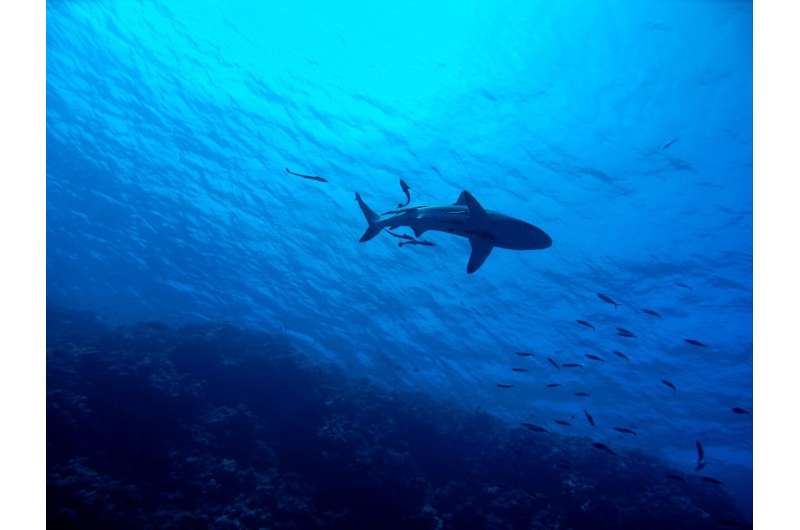This article has been reviewed according to Science X's editorial process and policies. Editors have highlighted the following attributes while ensuring the content's credibility:
fact-checked
peer-reviewed publication
trusted source
proofread
Evolution of taste: Study discovers bitter taste receptor in sharks

A research team from the University of Cologne, in collaboration with colleagues from the Leibniz Institute for Food Systems Biology in Freising, has discovered a receptor for bitter taste in twelve different cartilaginous fish (sharks and rays). The receptor belongs to the so-called taste receptors type 2 (T2R), which also make humans perceive bitter and potentially toxic foods.
Until now, it was assumed that such receptors only occur in bony vertebrates. The work was published under the title "A singular shark bitter taste receptor provides insights into the evolution of bitter taste perception" in the Proceedings of the National Academy of Sciences.
In the past, molecular research has had limited information on sharks, as their genomes are often relatively large. Therefore, sequencing is often more complex and takes longer than with many other animals. However, the techniques are more advanced nowadays, providing ever more information on the gene sequences of many cartilaginous fishes.
This enabled the neurobiologists lecturer (Privatdozent) Dr. Maik Behrens and Tatjana Lang from the Leibniz Institute for Food Systems Biology and Professor Dr. Sigrun Korsching at the Institute of Genetics of the University of Cologne to specifically search for bitter taste receptors in cartilaginous fish.
Twelve out of seventeen cartilaginous fish genomes studied contained genes for the taste receptors type 2, with only one T2R gene present in each species. The researchers named this single gene T2R1. The fact that only a single T2R gene was found suggests that it is the original form of these bitter taste receptors, which was not altered by gene duplication and subsequent different specialization of the resulting receptors.
"These findings give us new insights into the evolution of these receptors: We can look back almost 500 million years on the molecular and functional origin of an entire family of bitter taste receptors. Because that is how old the last common ancestor of cartilage and bony fish is," says Sigrun Korsching.
The authors have also introduced the T2R1 gene of the bamboo shark (C. plagiosum) and the catshark (S. canicula) into immortalized cell lines. The results showed that both sharks can taste bitter substances also perceived by humans, such as colchicine or bile acid. A screening of ninety-four human bitter substances identified eleven substances that could also activate the sharks' receptors.
Some of these eleven substances also activate the bitter taste receptors of the "living fossil" coelacanth (Latimeria chalumnae), an ancient species of bony fish, as the authors have shown in a previous study. Sigrun Korsching summarizes that "the extent to which this function has been conserved is astonishing, i.e. through the entire evolution of vertebrates."
More information: Behrens, Maik et al, A singular shark bitter taste receptor provides insights into the evolution of bitter taste perception, Proceedings of the National Academy of Sciences (2023). DOI: 10.1073/pnas.2310347120. doi.org/10.1073/pnas.2310347120
Journal information: Proceedings of the National Academy of Sciences
Provided by University of Cologne





















